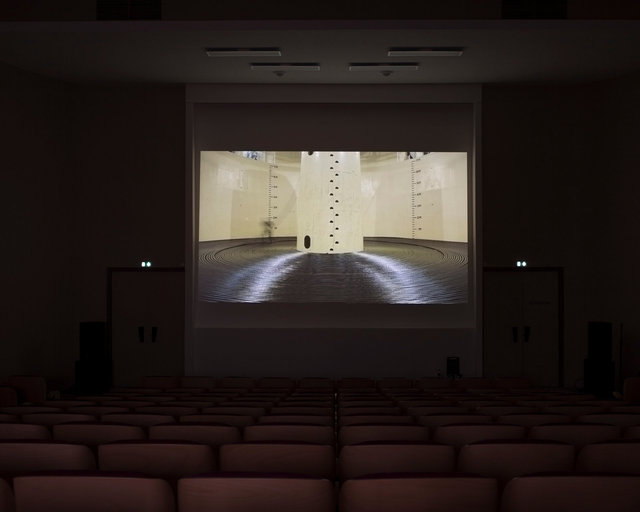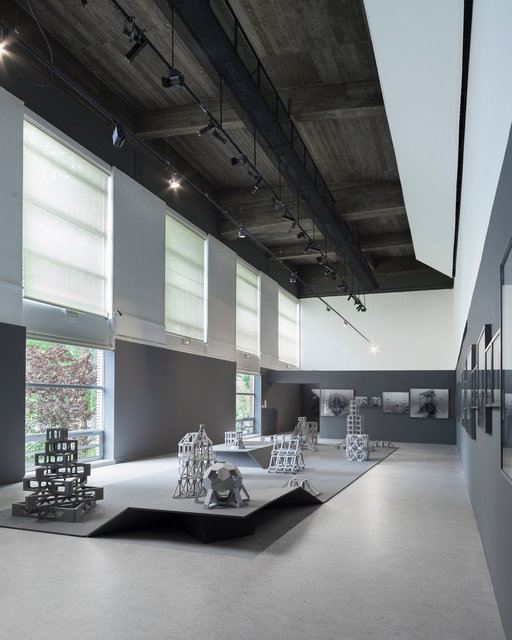
Exhibition view, Les villes immergées - Musée des Baux Arts de Calais - 2015
NICOLAS FLOC’H, LES VILLES IMMERGÉES MUSÉE DES BEAUX ARTS OF CALAIS July the 4th - September the 20th 2015 Les villes Immergées, Productive Structures, 19 Artificial Reefs, 2012-2015 Started in 2010, this series has received the help for artistic research from the CNAP. It is led with researchers : Sylvain Pioch (University of Montpellier 3), Philippe Lenfant (University of Perpignan), Gérard Veron and Yves Hénocque (Ifremer), Francois Simard (IUCN), Sandrine Ruitton (M.I.O), Hideyuki Takahashi (NRIFE). For the first time, the museum brings together a large set of productive structures, seen in Portugal, in Japan or in the Mediterranean area. The blurred and organic black & white images are contrasting with the straight line of the modular structures. Clear and definite like scientific objects, harmonious and proportionate like a classical temple, the models with complex geometries also looks like atoms and molecules. Nicolas Floc’h brings together baroque and classicism, archeology and fiction. From the New Atlantide, written by Francis Bacon in 1627 about the utopia, to 20 000 Leagues Under the Sea, written by Jules Verne and published in 1869, the atlantys city has became more than a myth. Indeed, a Japanese company wishes to realize an underwater city called «Ocean Spiral» by 2030.Here again, the immersed city of Nicolas Floc’h testify of a new interest of the artists for the natural landscape and their direct environment. The monumental and entropy artwork of Robert Smithson, Spiral Jetty, built with the help of bulldozers but destroyed with the effect of erosion, wad already challenging the art market, the visibility of the artwork and its receipt. Nicolas Floc’h seems to go further in the metaphor. The reef, weither it is recreational in the north american oceans or cultural (in its biological sens) in Japan, is a paradigm of the artwork inherited of the ready made as of the manufactured object, scientific but also organic.

Productive structures, Artificial reefs, 2011-2014 series of 35 photographs of 110 x 137,5 cm, 80 x 100 cm et 40 x 50 cm, pigment print on Dibond. These black and white underwater photographs, videos and concrete sculptures have been done from the observations of the artist in Japan, in Portugal or in France, off the coast of Nice, Marseille or Etretat. Nicolas Floc'h has been practicing apnea dive for many years. In 2010, he started practicing scuba diving with bottle, in order to conduct this photographic and video work about immersed reefs between - 20 and - 60 meters deep. For the artist, it is before all a documentary work which reflect on forms and structures imagined by engineers, seeing them from the point of view of the sculptor and without loosing their biological function.
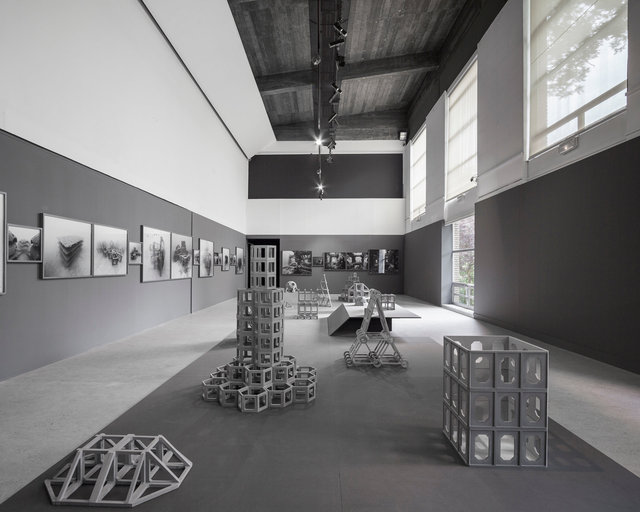
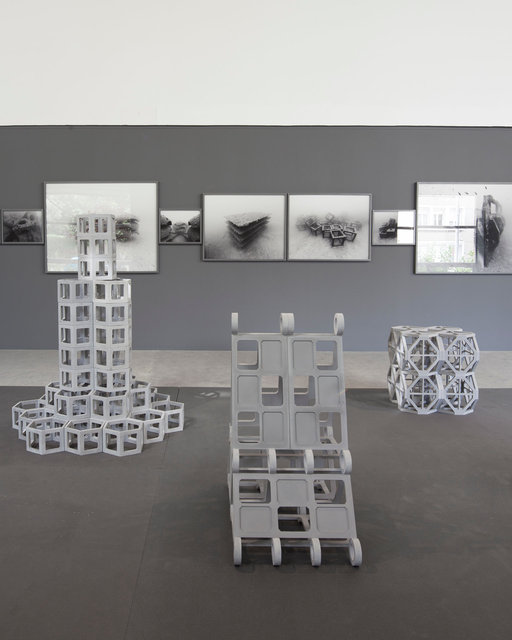
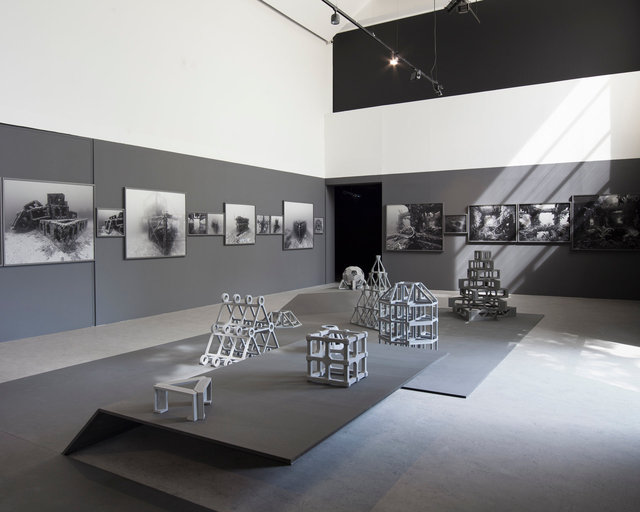

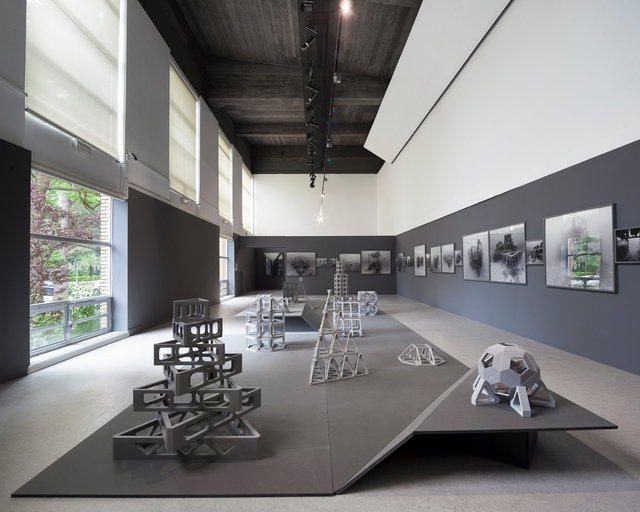
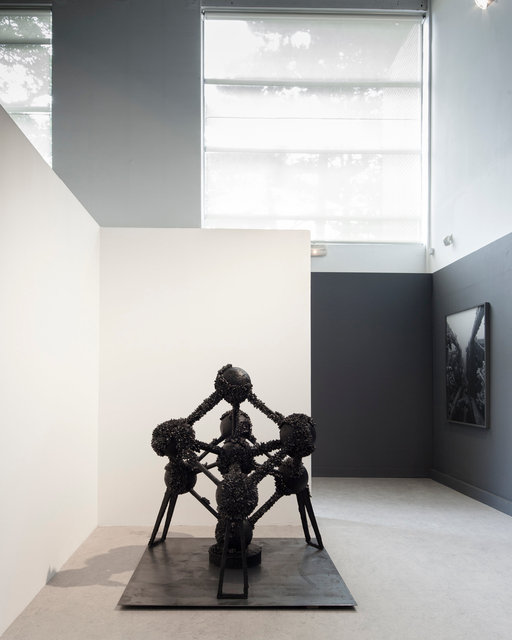
La moule atomique, Model of the project "structure conchylicole" - 2015
The Atomium, well-known architectural sculpture of Bruxelles, imagined by the ingenior André Waterkeyn and built by the architects André and Jean Polak for the Universal Exhibition of 1958, is a replica of an iron molecule. Covered with mussel shells, The atomic mussel doesn't hide neither its geographical anchorage nor its dérision. Literally and figuratively, Nicolas Floc’h grabs his ressources in the territory, known for its production and consumption of mussels. The reference to the work of Marcel Broodthaers, belgian artist, is obvious, as he himself choose the mussel for its evocative power, from the pun towards the mold of the sculptor to the colored and iridescent effects of the shell. Moreover, we can find in the title « la moule atomique » (the atomic mussel), the humorous and playful spirit of surrealism. Desacralisation, collage, accident, provocation, quirky spirit, cliché, incongruous association, concealment… as many strategies these artist hold dear.
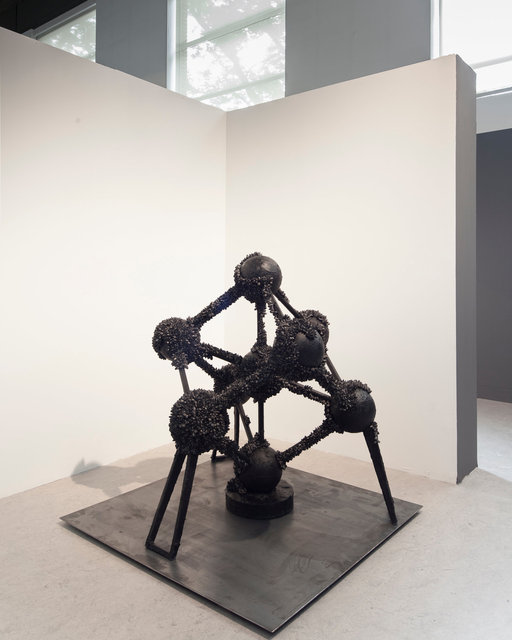
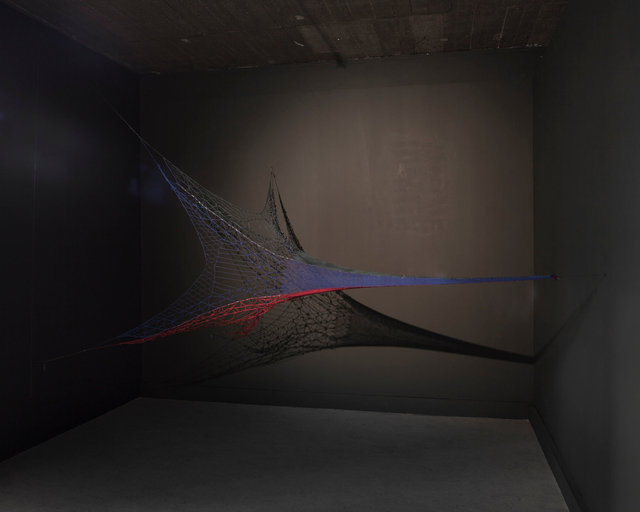
La tour pélagique - 2008, Coll. Frac Bretagne
Nicolas Floc'h is a fisherman. Since his first artworks in 1994, he started taking a real interest in this economical system through his artistic experiments, welter they are graphic, sculptural or relational. In 2008, he brings together in the same object, two monuments : the Eiffel Tower and the fishing net. He softens the Eiffel Tower, makes it sway, travel, strecht and loosen it. He plays with its hypervisibility by dipping it under the water. Symbol of the French capital, of technical progress and of Universal exhibitions, the Eiffel Tower access to another state with Nicolas Floc'h, it promotes other causes, less touristic but equally important.
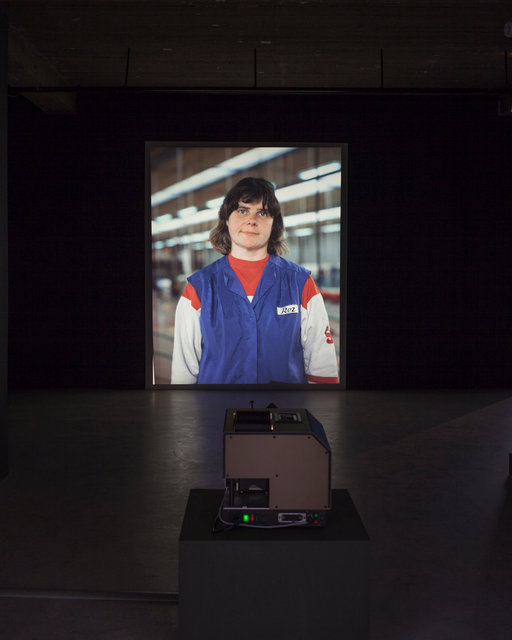
La tour pélagique - 2008, Coll. Frac Bretagne
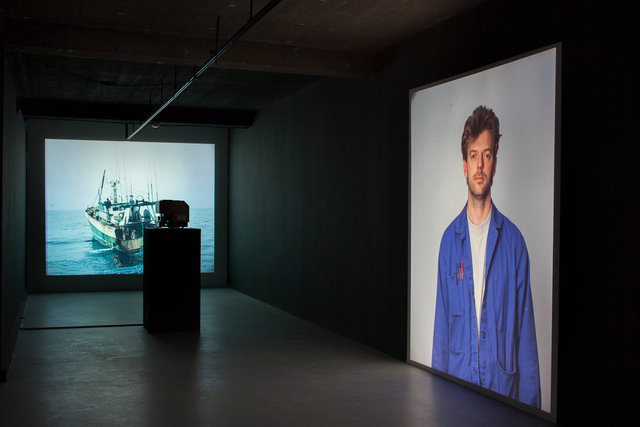
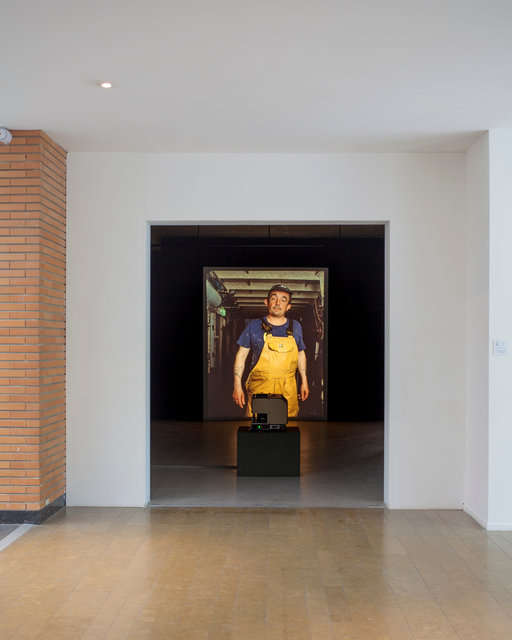
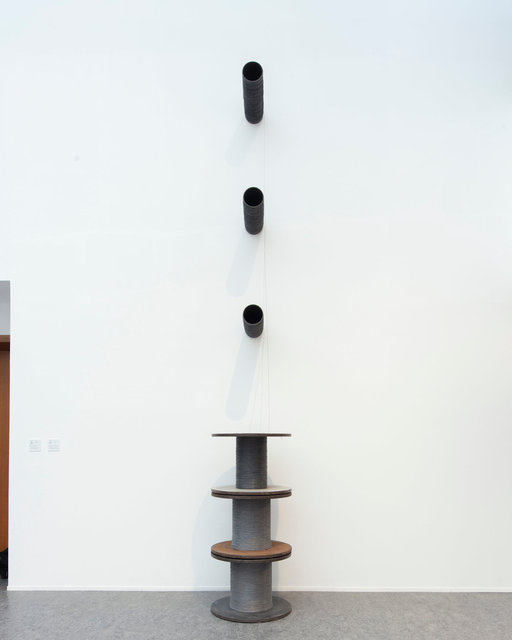
Lover ans Déconnexion - 2015
building materials used for sub-sea cables and recyclable components, variable dimensions. Realised during his residency in Calais, Lover and Déconnexion reflet Nicolas Floc'h 's interest for networks and flows. Alcatel-Lucent Submarine Networks (ASN) factory is specialised in the production of submarine fibre-optic cables. I's an Alcatel Lucent's subsidiary, one of the world's leading group in linking individuals together. In 1850, the first cable is installed between cap Gris-Nez, a few kilometers from Calais (France), and cap Sutherland, in England. Eight years later, the first transatlantic cable is installed between Ireland and Terre Neuve. Today 99% of the intercontinental traffic, pieces of data and et telephones, is transmitted under the oceans. Lover and Déconnexion are compound of the elements constituting the cables : copper, steel, polyethylene, polyethylene rope , bitumen and fibre optic. Nicolas Floc’h exposes the materiality and deconstruct what we are used to call, because of an abuse of language, dematerialisation. He talks about the different phases of production and recycling, particularly the last step : packaging. The cables are placed in circles on the floor. The "lovers" will reproduce this physical exercise on board in the storage tanks amplifying that so particular and current movement of the sailor who rolls his ropes to optimise the functional organization of the space. Besides the beauty of the gesture, there is poetry in the title of the artwork : in French, the verb "lover" means "to snuggle" whereas the English word "lover" would be translated as "amant". Lover can take different shapes. It's a film, an installation, a group of sculptures, performances. In fact, a protocole of exhibition, a scenario, a score. In the video, Nicolas Floc’h is following the rotating production of the câbles and films the Lovers until the moment they are in huge concrete tanks. The polymorphic sculptures reflects the permanent move of the ropes and cables's volume. They reinvent themselves according to the spaces they go through. The performance depicts a change of state and its activation. The city here is a city of flows, traffics and exchanges, but also od bodies. Urbanism and architecture are not the only paradigms of the city anymore. Would it now define itself with its only networks and bodies in movement, so as imagined by the critical architects from the 60s ?

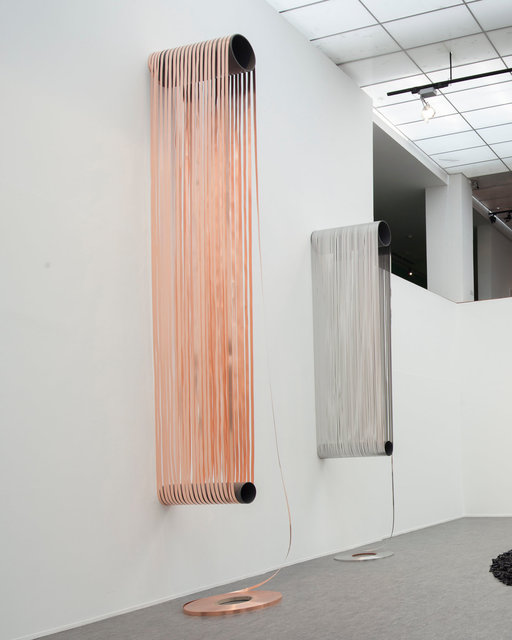
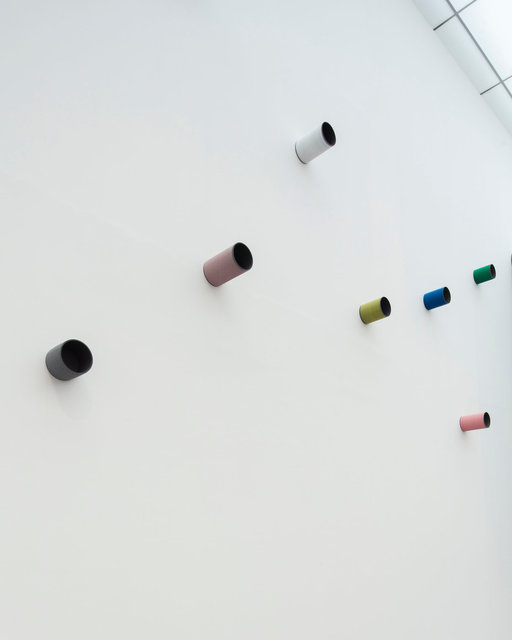

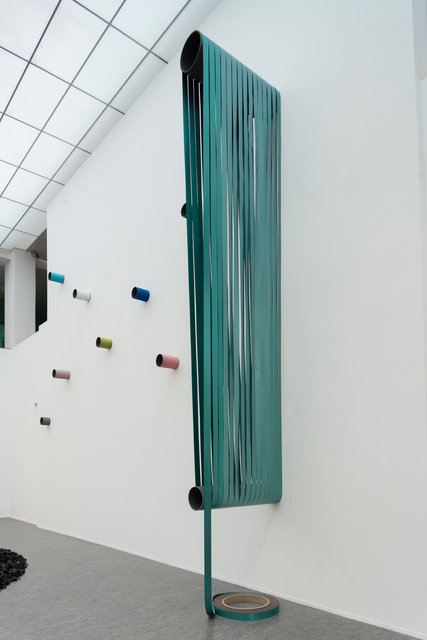
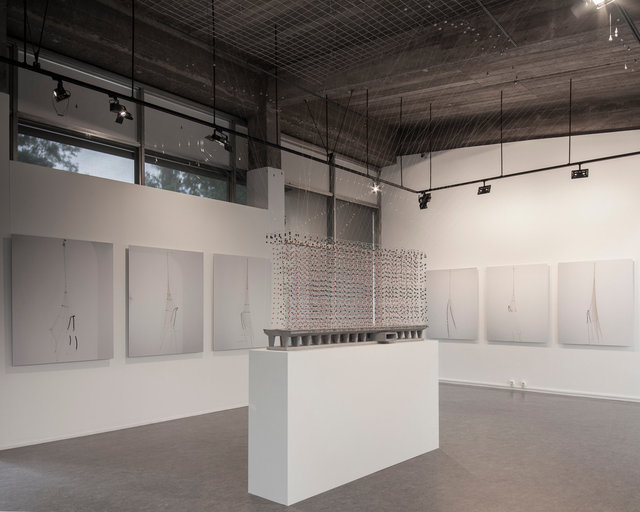
Récif Radieux
model of the project Artificial reef (1/10) - 2014 concrete, nylon wire, pearls, 80 x 203 x 33 cm. Producted by DEL'ART, Nice, France. A PROJECT FOR ROQUEBRUNE'S SITE During his stay in Nice, Nicolas Floc’h has conceived a project for the specific site of Roquebrune where is located Le Corbusier's tomb and one of his constructions, modest and ingenious, the Cabanon. In tribute to the well-known pointer of modern architecture, Nicolas Floc'h has the idea of setting up a new productive structure under the sea, which would take the shape of la Cité Radieuse's plan in 3D. Some ropes ballasted with water wings would be attached to a base made out of concrete or steel. The ropes would materialize the edges of the main volumes of this building : a parallélépipède on stilts. It is both an artwork that talks about the wired architecture which Nicolas Floc'h has already experienced and a productive structure which offer to fishes a real house of approximately 30 meters long. A model of that project (150 x 250 x 300 cm) is showed in the exhibition.
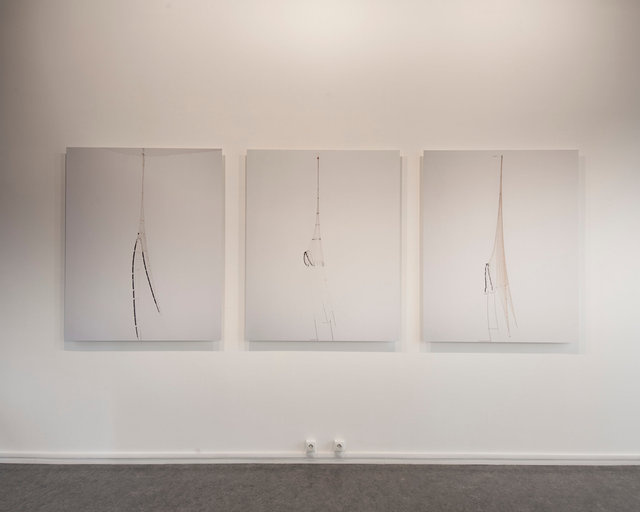
Structures productives: Architectures - 2014.
Color photographs mounted on Dibond, 137,5 x 110cm each. Photographic series of fishing nets' study models, Ifremer- Lorient. (Project developed and produced with the research program « Géographie Variable », EESAB, 2014) These images are part of a group of artworks named productive structures. The productive structures are constructions that can be aimed at reestablishing or creating ecosystems, like the artificial reefs do. These architectures permit the implementation of a natural growth process aimed at producing consumable biomass and so aimed at feeding humans. Artworks like La Tour Pélagique or Architectures are more a representation of harvesting systems, structures for life capture for consumption purposes. La tour pélagique was transforming in true scale an architecture/monument, symbole of an overpowerful industrialisation, into a functional and contemporary object : a fishing net. The Architectures series show net models used for improving technical catch, they are used as study models by scientists. Pictured, their presence is surprising. Both valuable and fragile, these structures stand up, like architectures in the space of the studio. The transparency of the mesh take some aspects of flaming gothic spires or makes us think about the Sagrada Familia.
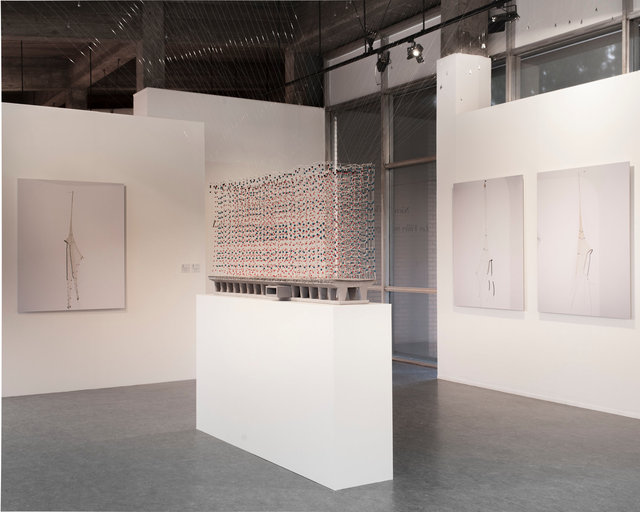
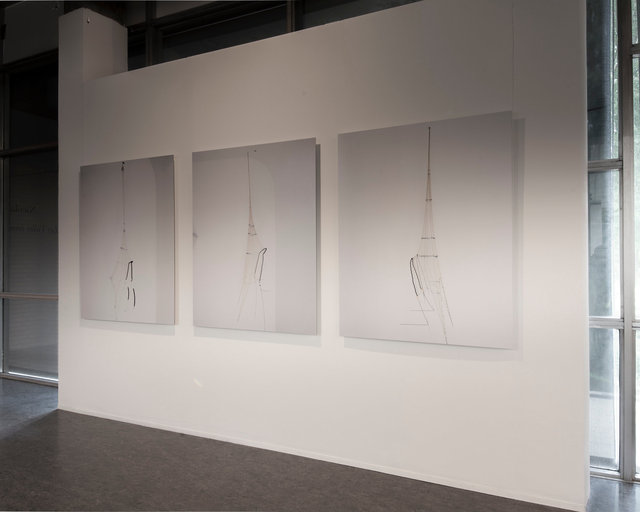
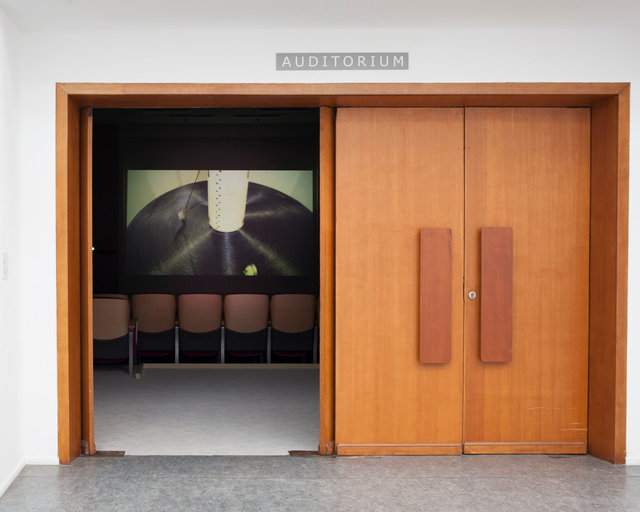
Lover - 2015
Video 9mn. Production of Le Jardin des arts, Cap Calaisis/Le musée des beaux-arts de Calais, ASN (Alcatel-Lucent Submarine Networks) Calais Lover can take different shapes. It's a film, an installation, a group of sculptures, performances. In fact, a protocole of exhibition, a scenario, a score. In the video, Nicolas Floc’h is following the rotating production of the câbles and films the Lovers until the moment they are in huge concrete tanks. The polymorphic sculptures reflects the permanent move of the ropes and cables's volume. They reinvent themselves according to the spaces they go through. The performance depicts a change of state and its activation.
